How to Run Profitable Online Group Coaching Programs in 2025
Learn how to run profitable online group coaching programs with proven strategies, tools, and tips to grow your income and impact.
Learn how to run profitable online group coaching programs with proven strategies, tools, and tips to grow your income and impact.
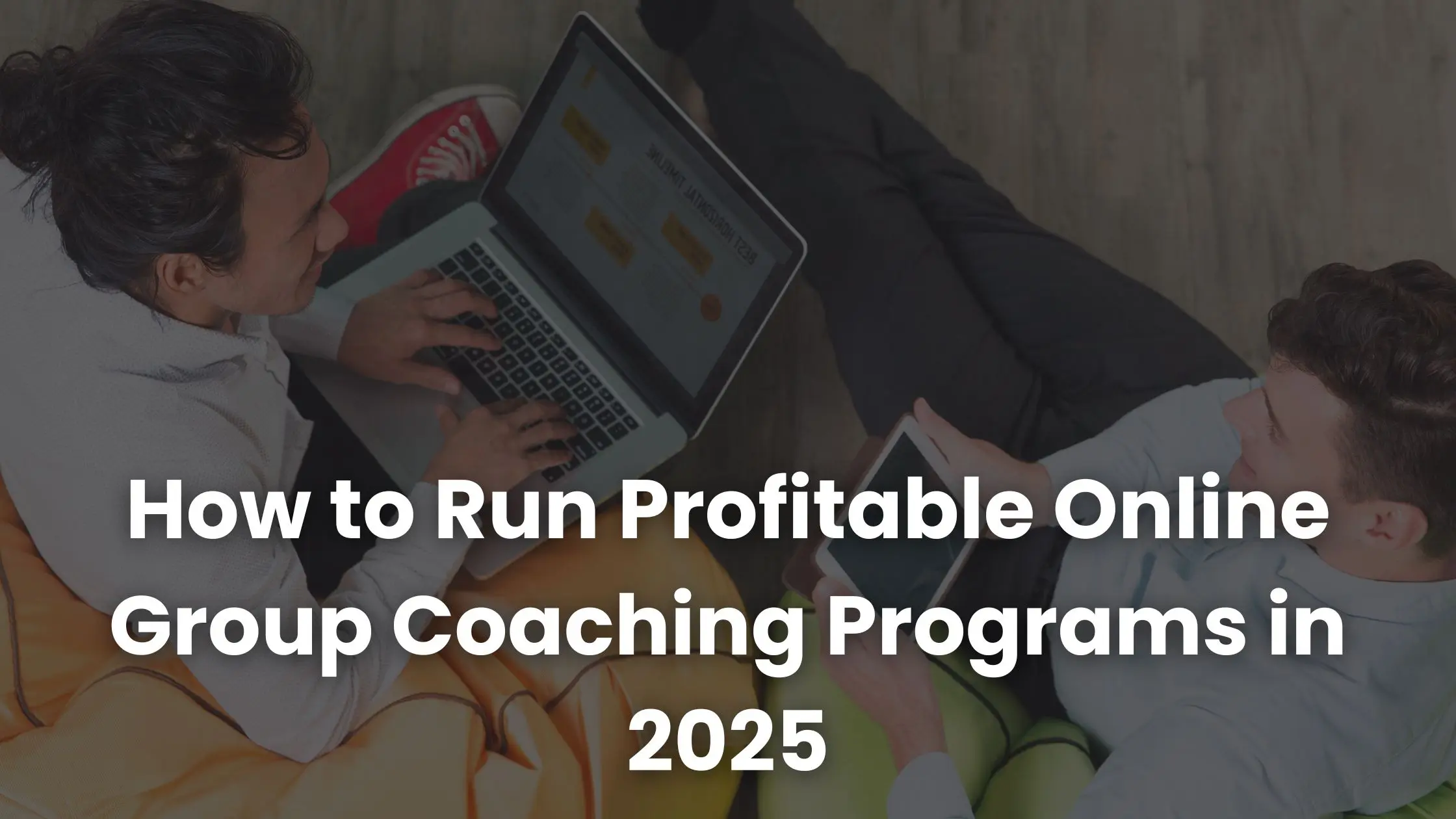
Online group coaching programs have exploded in popularity — and for good reason! They're scalable, efficient, and can generate serious income while helping more people at once.
Since 2019, the number of active coaches around the world has more than doubled—growing from 71,000 to about 167,300 in 2025. This shows how much more people are turning to coaching, including group programs, for support and growth. (Source)
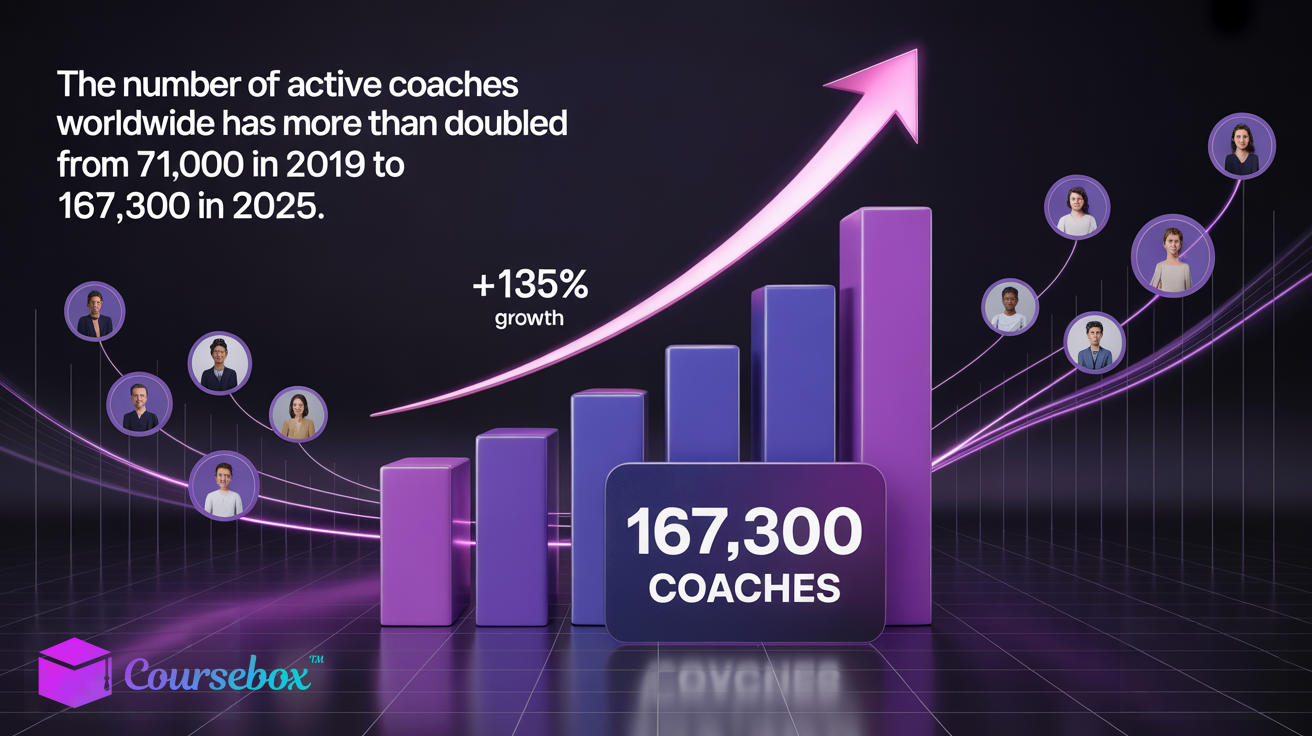
But here’s the truth: just showing up on Zoom with a few clients isn’t enough to make it profitable.
In this guide, I’ll walk you through exactly how to set up, market, and scale your group coaching program without burning out.
Whether you're just starting out or looking to boost your revenue, you’ll find practical, step-by-step insights here. Ready to turn your expertise into a thriving group offer? Let’s dive in!
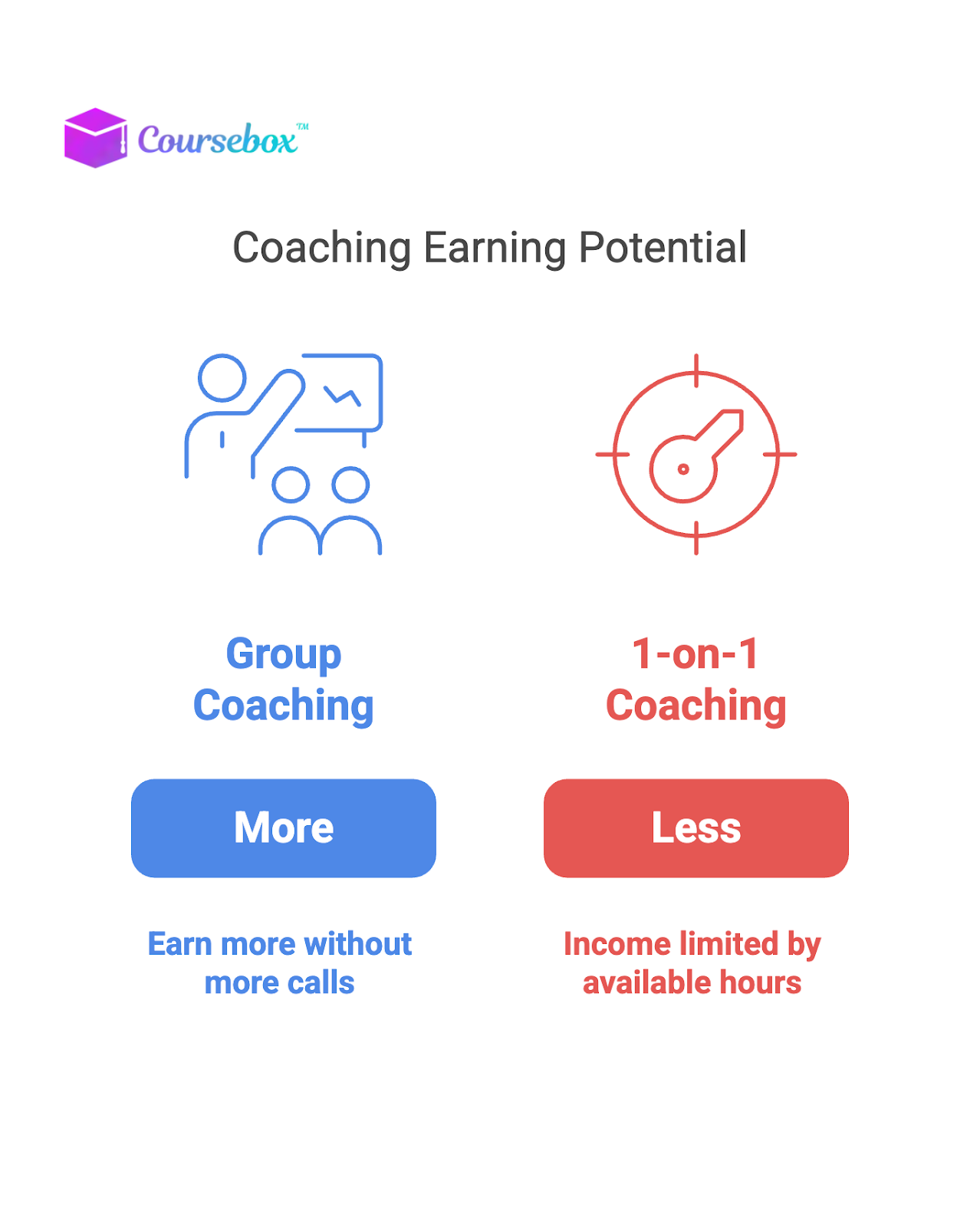
If you're coaching one person at a time, your income and schedule hit a limit fast. You're paid by the hour, and once your calendar is full, you can’t grow much more.
Group coaching helps you use your time better. You teach several people at once, which means you earn more without adding more calls.
Groups also support learning in a different way. A study in the International Journal of Evidence Based Coaching and Mentoring found that group coaching helps people feel more aware, more motivated, and more supported. When clients work together, they learn from each other and stay on track—leading to better results.
Group coaching is also easier to grow. Once your program is planned, you can run it again for new clients. You don’t have to change much each time. This makes your work more stable and easier to manage over time.
But group coaching isn’t always the right fit. You may want to choose 1-on-1 if:
If your content works well in a shared space and you want to help more people at once, group coaching might be the next step for you.
Before you build your group program, it’s important to make sure people actually want it. This step is called validation. It helps you avoid spending time and energy on an offer that may not sell.
Start by testing your idea. You can do this by asking your audience what they’re struggling with. Use simple surveys, social media polls, or short calls to learn more. Ask open-ended questions to see if your idea matches what they need.
Another good option is running a beta round. This is a test version of your program with a small group. You offer it at a lower price in exchange for feedback. It helps you learn what works and what doesn’t before your full launch.
A Minimum Viable Offer (MVO) is the simplest version of your coaching program. It includes only the must-have parts to deliver a result. You can always improve it later.
Avoid these common mistakes:
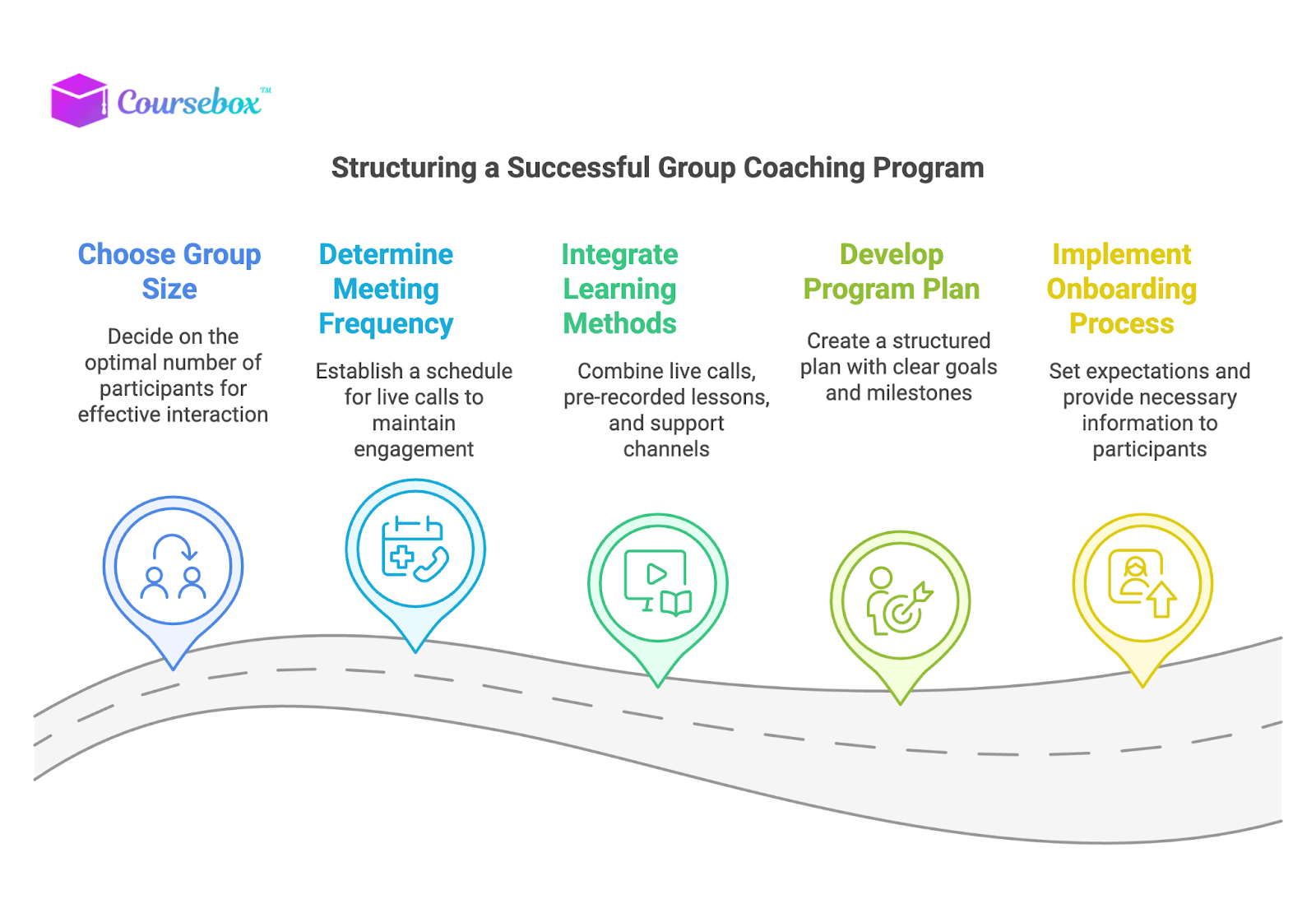
The way you set up your group coaching program makes a big difference. It affects how your clients learn and whether they stick with it.
Start by choosing the right group size. For most programs, 6 to 12 people works well. It’s small enough for personal support but big enough for group learning.
Next, decide how often you’ll meet. Weekly or biweekly live calls are common. Too few meetings can lead to drop-off. Too many may feel overwhelming.
Use a mix of live calls, pre-recorded lessons, and a support channel like Slack or a private Facebook group. This lets clients learn at their own pace but still get real-time help.
Build a clear plan for the program. Set learning goals, break them into modules, and track progress with milestones. A milestone is a clear point in the journey—like finishing a module or reaching a skill.
Before the program starts, set the tone with a strong onboarding process. This helps clients know what to expect and lowers drop-out rates.
Here are a few key things to include:
Structure gives your clients confidence—and helps you stay organized.
How you price your group coaching program can affect both your income and your client’s results. The goal is to find a price that reflects the value you provide—not just your time.
Start by thinking about the transformation your clients will get. Are they reaching a clear goal? Solving a painful problem? Price based on that result, not how many hours you spend with them.
You can also offer pricing tiers. This gives people more choices. For example, a basic tier might include lessons and group calls. A higher tier could add 1-on-1 check-ins or extra resources.
Here are a few common models that work well:
Some coaches use early bird or founding member discounts to reward fast action. These should have clear limits—like a deadline or a set number of spots—to avoid devaluing your offer.
Avoid underpricing just to fill seats. Start with a price that feels fair for the outcome you offer—and adjust as you grow.
Running a group coaching program takes more than just showing up to teach. The right tools can save you time and help things run smoothly.
For live sessions, Zoom is a popular choice. It’s stable, easy to use, and works well for group calls. Google Meet is another good option, especially if you’re already using Google Workspace.
To host course content, try platforms like Coursebox.ai, Kajabi, or Teachable.
Coursebox.ai is designed specifically for coaches and lets you deliver lessons, track progress, and even build certifications—all in one place. It’s a great all-in-one option if you want fewer moving parts.

You’ll also want to automate the basics. Tools like Calendly or Acuity help you schedule calls without the back-and-forth. Platforms like Stripe or PayPal let you take payments, and most course platforms send reminders automatically.
Community support is key. Some coaches use Slack for daily check-ins. Others like Discord for casual chats and voice rooms. Facebook Groups are a good choice if your audience is already on Facebook.
Here’s a quick tool stack to consider:
Marketing helps the right people find your program. One of the best ways to start is by building a waitlist. Use a simple lead magnet—like a free checklist or guide—to get people to sign up. You can also host a short webinar to teach something valuable and introduce your offer.
Once people join your list, send them a few helpful emails. A good email sequence builds trust and explains what your program is about. It should answer questions and help people see if the program is right for them.
Social proof is also key. Share testimonials from past clients. You can also use short case studies that show the results people got. This builds trust and helps new people feel confident in joining.
For traffic, organic marketing (like content on Instagram, YouTube, or a blog) can work well if you’re patient. If you want faster results, try paid ads on Facebook or Instagram. In 2025, a mix of both tends to work best.
To keep it simple, focus on:
Start small. Test what works. Then improve as you go.
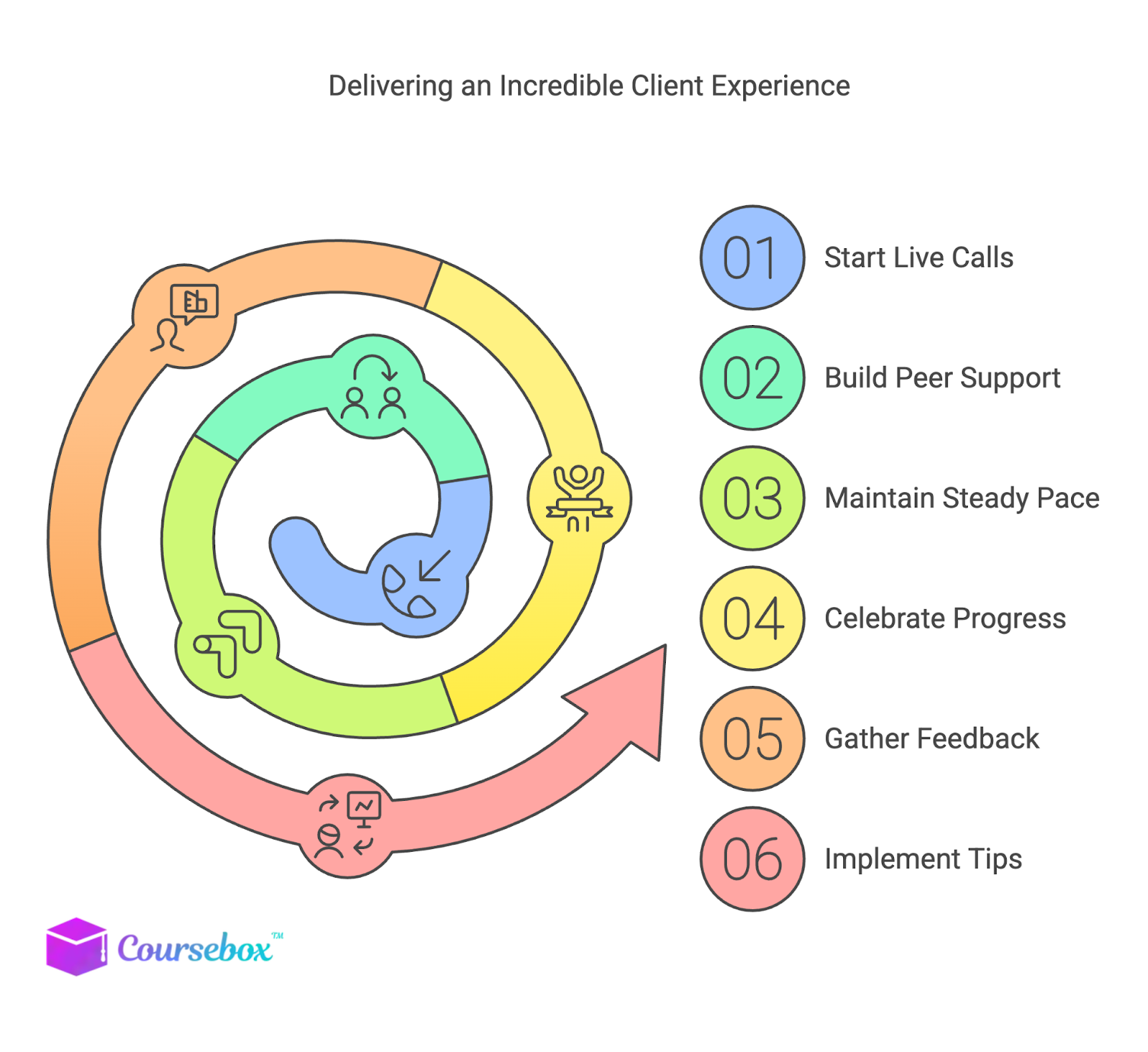
A great client experience keeps people coming back—and gets you strong word-of-mouth.
Start with your live calls. Keep them interactive. Ask questions, use breakout rooms, and check in with quieter members. When clients feel seen, they stay engaged.
Build peer support into your program. This means helping clients connect with each other. You can create buddy systems or small accountability groups. People often stay more committed when they know others are counting on them.
To avoid drop-off in the middle of the program, keep the pace steady and the wins visible. Celebrate progress, remind them of their goals, and make it easy to catch up if someone falls behind.
Ask for feedback before the end. You can use a short form or run a live feedback session. Honest input helps you make the next round even better.
Here are a few tips to support a strong client experience:
When people feel supported, they’re more likely to finish—and recommend your program.
Once you’ve run your group coaching program a few times, you may want to grow it. But growth doesn’t have to mean more work.
Start by turning your live program into an evergreen or hybrid version. Evergreen means people can join anytime and go through content at their own pace. A hybrid setup mixes pre-recorded lessons with live calls. This saves you time while still offering support.
To scale without burnout, plan your year. Run multiple cohorts with clear breaks in between. You can also hire help—like a co-coach or admin—to manage tasks.
Some coaches license their programs. This means you allow others to use your method under your name. Another option is to certify others to teach your system. These paths help grow your reach without needing you in every session.
Track your KPIs—Key Performance Indicators. These are numbers that show how your program is doing. Look at:
When you know what’s working, it’s easier to grow in a smart, steady way. Scaling isn’t about doing more—it’s about doing what works, again and again.
Running a profitable online group coaching program in 2025 isn’t about working harder — it’s about working smarter with systems, strategy, and a client-first approach.
From validating your offer to delivering an unforgettable experience and scaling with ease, you now have the framework to turn your expertise into lasting income and impact. Now it’s your move — pick your topic, validate it, and start building that waitlist.
👉 Want an easier way to run it all? Try Coursebox.ai to build, deliver, and scale your group program in one simple platform.
